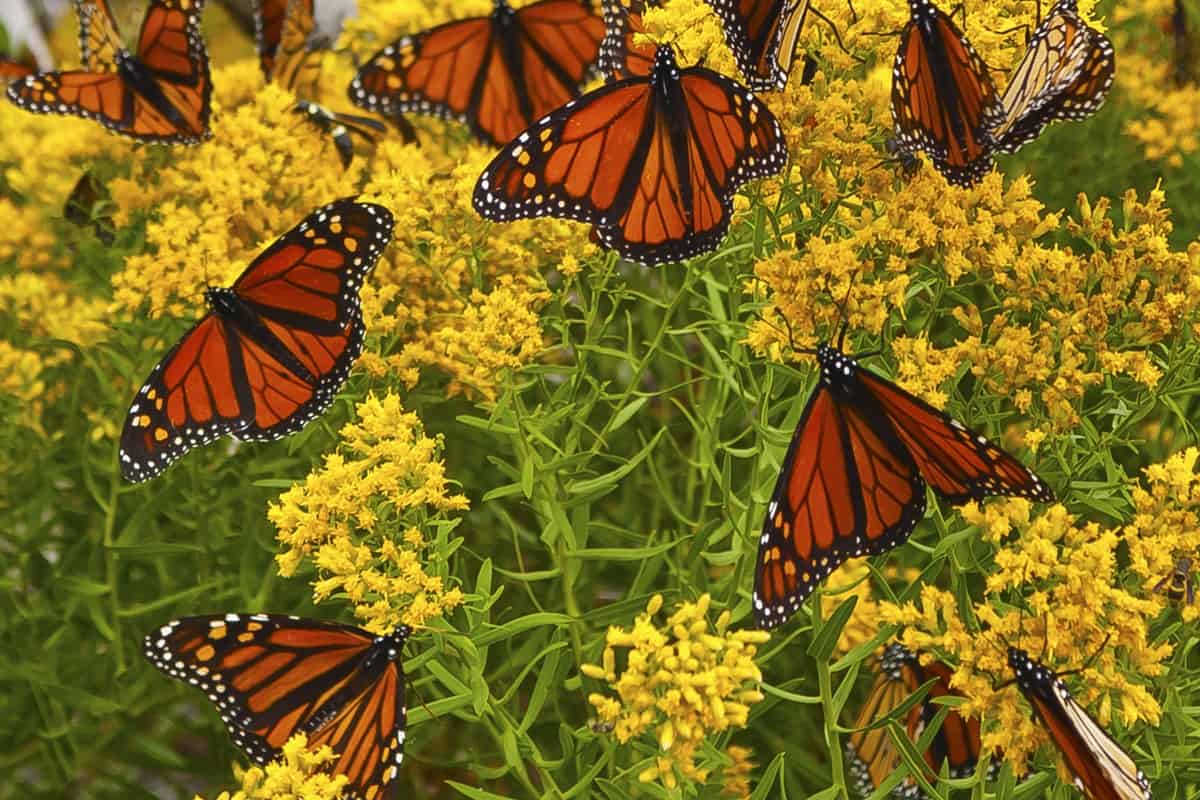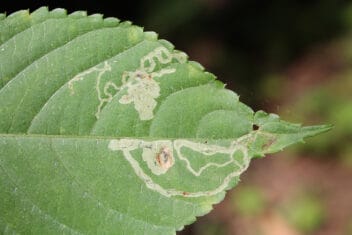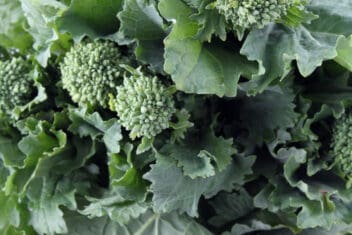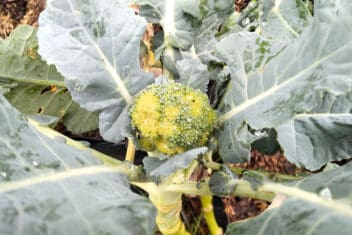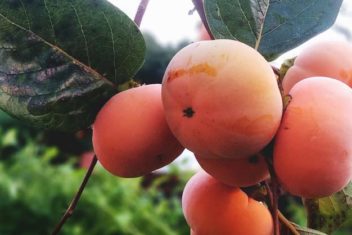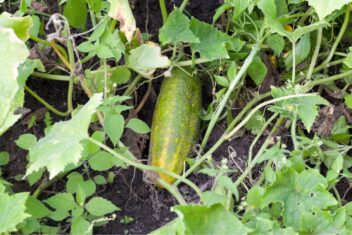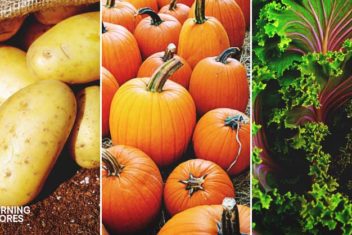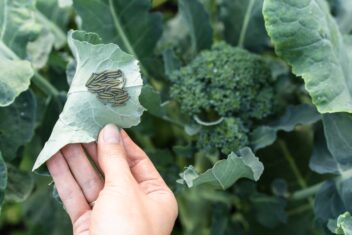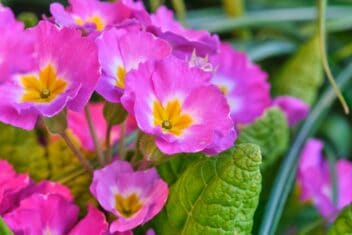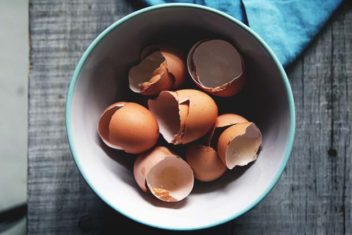Each spring, I’m delighted to see monarch butterflies fluttering around my garden and landing on my plants.
They’re beautiful to behold, that’s for sure. You might wonder, “are they doing any good in my garden, or just there for show?”
The reality is that monarch butterflies are beyond valuable for any kind of garden.
Unfortunately, their populations are in decline. You can help get them back into fighting shape and encourage them to hang out in your garden.
Just follow these simple steps!
What Are Monarch Butterflies?
The monarch butterfly is perhaps one of the most recognizable butterfly species on the planet.
It has iconic orange wings that are laced with black. This is a creature that can be found in most parts of North America.
An iconic pollinator species, the monarch butterfly is known scientifically as Danaus plexippus. It is also sometimes referred to as a milkweed butterfly (it’s part of the larger subfamily), common tiger, wanderer, and black-veined brown butterfly.
Whatever you call them, monarch butterflies are breathtaking to behold. They offer lots of benefits to any kind of garden.
Unfortunately, their populations are in decline due to threats such as habitat loss, parasites, and migratory losses. Many of these are related to climate change.
Fortunately, there are things you can do to help.
How Do Monarch Butterflies Help the Garden?
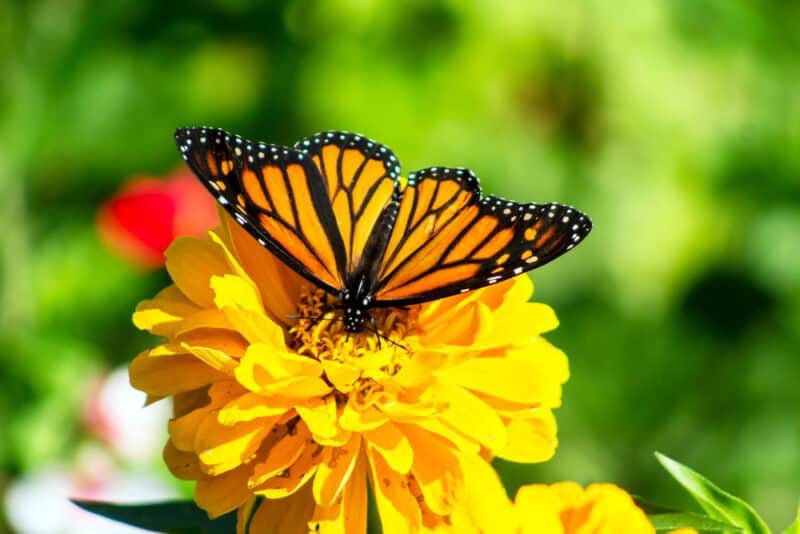
Monarch butterflies are crucial for the garden in so many ways.
The most obvious is that they are essential pollinators. They unintentionally move pollen within and between flowers, helping your plants set seeds and produce new plants.
Monarch butterflies also serve as a valuable food source for other types of wildlife. Some birds, for instance, feed on adult butterflies, while smaller predators go after eggs and caterpillars.
Many of these species are also beneficial for the garden. By attracting butterflies, you’ll be attracting other helpful critters as well.
Tips for Attracting Monarch Butterflies
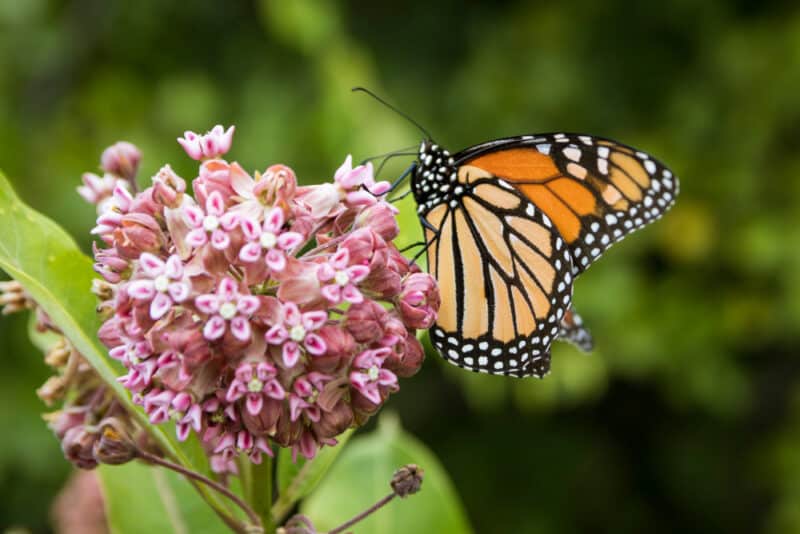
If you want to attract monarch butterflies to your garden, either out of the goodness of your heart or to help your garden thrive, here are some tips to help you do so.
1. Grow Native Plants
It’s easy to create a butterfly-friendly oasis in your garden if you put some thought into it!
One easy way to do this is to plant native plants. Milkweed is the obvious choice, since this is where monarch butterflies lay their eggs. These butterflies are unique in that they are reliant solely on this single plant species. They can only lay their eggs on the milkweed and the caterpillars can only eat the milkweed.
Planting milkweed, of course, is the recommended course of action by most experts. In many cases, it can even be grown along roadsides or rights of way.
Monarch butterflies will often be able to pollinate (and use as a food source) other kinds of plants. However, native plants are always going to be the preferred way to go. After all, these are the species the butterflies are used to depending on.
Make sure the plants you add to your landscape are not wild-collected.
It’s important to take note of the best monarch butterfly habitat when you are hiking. However, you shouldn’t collect them from the wild.
Instead, you can buy seeds or starts from native plant nurseries and seed exchanges. Ask your local nursery or garden center about the best place to find these resources.
2. Avoid Herbicides and Pesticides
Whenever possible, avoid using pesticides and herbicides.
Not only can they affect pollinators of all kinds (including bees and other species besides monarch butterflies), but they can also negatively affect non-target species.
In other words, you might be trying to get rid of the crabgrass growing on your lawn and accidentally kill all the milkweed growing nearby.
If you absolutely must use these chemicals, use them as spot treatments instead of broadcast sprays. Look for natural ways to get rid of pests and weeds, like hand pulling.
Using natural methods of weed and pest control offers many benefits beyond just helping keep the populations of monarch butterflies intact, so keep this in mind.
3. Grow Nectar-Rich Foods
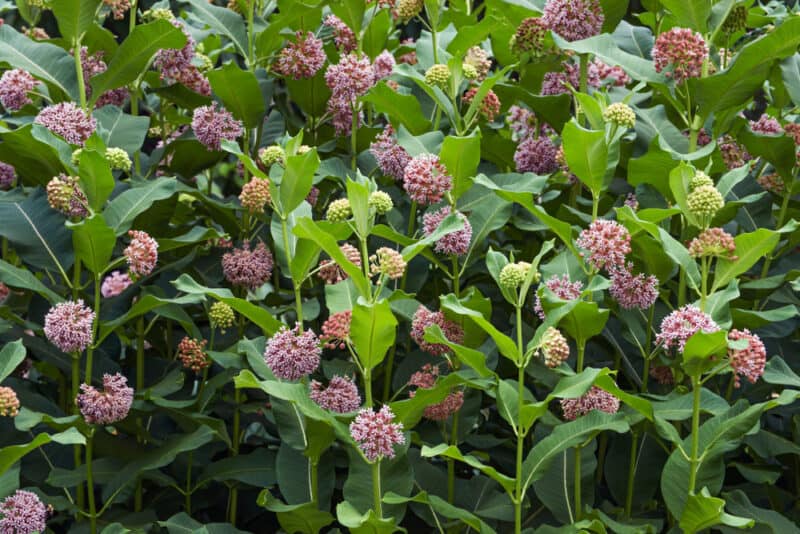
Plant at least two milkweed species in your garden – that way, you can make sure you attract monarchs and other pollinators throughout the breeding season.
There are many species of milkweed you can grow depending on where you live. For example, if you live east of the Rocky Mountains, common milkweed or butterfly milkweed might be best.
You can get an idea of which milkweed species are best for your area by checking with your local cooperative extension.
Milkweed is by far the best nectar-rich food source to grow for monarch butterflies, but you can grow other nurse crops, too.
These will help nurture the slower-growing milkweed and block weeds while they’re getting established. Plus, many will provide nectar for other pollinators, too.
Some good options include things like native grasses, black-eyed Susans, and goldenrod.
4. Provide Water
Consider putting out a few shallow saucers of water in the garden. Butterflies, like all other living things, need water. Giving them a place to stop by for a drink is a great way to encourage them to stay a bit longer in your garden.
The shallow water will be much more attractive to the butterflies than deep standing water.
Therefore, you may want to skip birdbaths or modify them by adding rocks, pebbles, or other features that the butterflies can perch on.
5. Add Minerals
Adding water for the monarch butterflies you’d like to attract is one smart move – but you can go one step further by adding other minerals. For example, a bit of table salt or composting fruit will add minerals and keep your monarch friends healthy.
6. Educate Yourself
There is so much information, online and otherwise, about monarch butterflies that it would be silly not to do some research!
From print to digital, there’s a staggering amount of information out there about every aspect of monarch butterfly biology, conservation, and distribution.
It’s also a good idea to check in with local public or university libraries, garden clubs, native plant societies, Master Gardeners’ or Naturalists’ Programs, and more.
All of these nature-oriented programs will have resources you can tap into, to understand the role that monarchs and other butterflies play in your garden.
Plus, since these groups are local, they’ll have a better idea of which specific plants will be best at attracting monarch butterflies in your unique situation.
If you want to take an even deeper dive into the subject, you can always visit a nearby arboretum or botanical garden or participate in local Earth Day activities that are pollinator-focused.
If you really want to invest some time in this, most community colleges offer classes in local wildflowers, pollinators, and butterflies, too.
Yes, Monarch Butterflies are Good for the Garden!
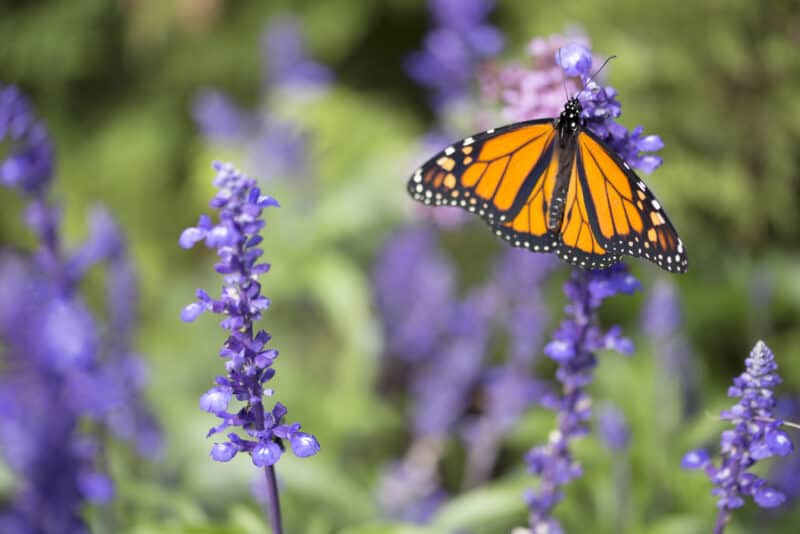
When it comes to growing a healthy, productive garden, there are all kinds of tricks and tips you can follow.
However, if you’d like your garden to be a natural, somewhat wild place that serves as a haven for local wildlife, you’ve got to consider these ways to attract monarch butterflies.
Sure, creatures like spiders and soldier beetles are good for the garden, too – but monarch butterflies are way more beautiful, aren’t they?
